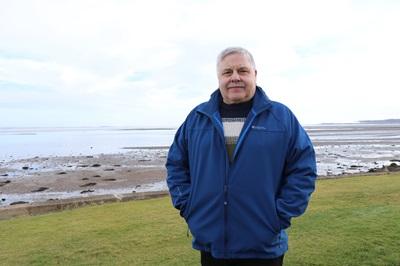
A global drug trial to test the effectiveness of the asthma drug tezepelumab in treating nasal polyps has shown significant positive effects.
Patients who received the drug showed marked reductions in the size of nasal polyps and nasal blockage, compared to those who received a placebo.
Significant effects of the drug were seen in just two or four weeks (at the first post-treatment assessment), and secondary outcomes were also noted.
These included improved sense of smell, quality of life, underlying sinus disease was seen to improve, and the time to first surgery or rescue oral corticosteroid use was also reduced.
The results of the study have been published in the New England Journal of Medicine.
The global trial was co-led by Professor Brian Lipworth, of the University of Dundee’s School of Medicine, a practicing consultant physician working in the departments of respiratory medicine and ear nose throat clinics.
Professor Lipworth said, “These results represent an important breakthrough in terms of therapy for patients suffering from severe chronic rhinosinusitis and nasal polyps.
“I treat patients who are already using this drug for asthma – around a third of patients who have severe asthma also have nasal polyps.
“Many of them were reporting that their nasal polyp symptoms and related quality of life were greatly improved shortly after taking this drug in the clinic, where we also noticed their polyps had shrunk.
“However that was just real-life clinical experience, so it’s fantastic to confirm that it can treat this condition too in the setting of a proper placebo-controlled trial.”
The injectable drug, which is already approved in the UK for severe asthma, is produced by pharmaceutical companies AstraZeneca and Amgen.
The trial represents the first time tezepelumab has been sole focused on testing its ability to impact nasal conditions, including severe persistent inflammation of the sinuses, known as severe chronic rhinosinusitis with nasal polyps.
As a result of this inflammation, nasal polyps – when the lining of sinuses becomes thickened and protrudes down into the nose – can form.
This can lead to nasal blockage, loss of smell and taste, nasal discharge and a constant drip down the back of the nose, and facial pain along with recurrent sinus infections, which have a major impact on quality of life.
Nasal polyps are thought to affect around 5% of the total population in the UK, and around 20% of patients with asthma.
A total of 408 participants with severe chronic rhinosinusitis and nasal polyps, from ten different countries, were involved in the WAYPOINT trial, with 203 of those being given the active drug injections and the others being issued with a placebo.
All participants received a monthly dose over 52 weeks and the nasal polyps were then inspected with a telescope and symptoms reported as well as sinus scans, nasal flow measurement and formal smell testing.
Case study
John Ellerby, 70, of Tayport, Scotland, has suffered from nasal polyps for nearly 40 years and has undergone three surgical procedures to remove growths from his sinuses.
John says the polyps make his nose feel like a “one way valve” through which he can breathe in but not out.
His symptoms include a feeling of a blocked nose that cannot be cleared, headaches, earaches, becoming breathless to the point he needs to use an inhaler, coughing and mucus falling out of his nose unnoticed.
The condition also affects his sleep and his moods, leading to irritability.
Despite not being initially told if he was given the active drug tezepelumab or the placebo, John says it became very clear to him when his sense of smell returned, around three months into the trial.
He said, “I was going around the house sniffing everything – coffee, perfume, the flowers in the garden. It was fantastic.
“I walked along the beach enjoying the smell of the sea, I started playing squash again, and I was out with the dog doing 14,000 steps a day. I was doing things I hadn’t been able to do since my 30s, I felt like a new man.”